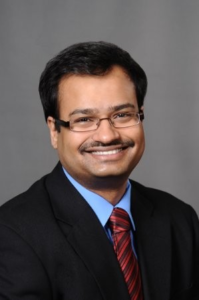
- This event has passed.
Webinar: Weak Area Network Control of Wind Turbine Generators
April 30, 2020 @ 2:00 pm - 3:00 pm EDT
Featured Speaker: Dr. Rajat Majumder, Key Senior Expert Engineer, Siemens Gamesa Renewable Energy

Dr. Rajat Majumder
Dr. Rajat Majumder is a Key Senior Expert Engineer in Siemens Gamesa Renewable Energy. He covers all Siemens Gamesa Renewable Energy, Inc. territory across the United States and Canada. He makes critical technical decisions on product portfolio, manage risks and makes strategic impact on the regional organization. He works closely with global engineering headquarters in Europe influencing technical road map in the North America region. He also works to represent subject matter expert to internal stake holders and customers – including customer’s engineering teams. He also represents SGRE in various standard organization such as NERC, IEEE, WECC etc.
Dr. Rajat Majumder received his PhD in Electrical Engineering from Imperial College London in 2006. He has published many papers and holds several patents in field of power systems control. Prior to Siemens Gamesa Renewable Energy, he worked at Siemens Industry Inc, focusing HVDC and FACTS and ABB Corporate Research in Sweden and USA.
Moderator: Charlie Smith, ESIG Executive Director
Registration Cost: FREE
Webinar Abstract: Most of the inverter-based resources in operation today, such as wind turbine generators (WTGs), solar PV and battery energy storage (BES) work on a current vector control. The interfacing converter creates a voltage at its terminal to inject a certain amount of current of a particular nature to meet the control objectives, such as active power set point and controlling AC voltage or reactive power etc. The inverter-based resources (IBRs) that use such a control mechanism are also termed “grid following’.
If the reference voltage created at the terminals of the converter varies significantly from the system voltage either in magnitude or frequency/phase following any system event, the inaccuracy introduced into the IBR control system could lead to an unreliable and unstable operation of the device. A weak AC grid often exhibits such behavior. Therefore, recovery of system voltage is very important for such a control mechanism following any grid event, especially grid faults. To improve such conditions, some well-proven traditional approaches can be taken, such as building out additional transmission lines (reducing the effective grid impedance), or installation of additional VAR support such as synchronous condensers or power electronics based SVC/STATCOM. In some instances, special control measures referred to as weak grid options (WGO) or extended voltage dip mode control can be deployed. The webinar will discuss the basics of grid following converter operation and their behavior in weak grids, and both traditional approaches and control system tuning that can be done with WGO to enable reliable system operation.
However, there could be a situation where additional build out may not be feasible, and notwithstanding special controls such as WGO, the WTG cannot be made to operate in a stable manner. It is also apparent that a grid following IBR will not be suitable to operate in an islanded condition due to complete lack of an external reference voltage. This has led to further interest in the ‘grid forming’ class of controllers which are inherently more suited to such weak and islanded AC power systems. The webinar will conclude with a discussion of grid forming converters and their characteristics, such as fast frequency control and blackstart capability.

